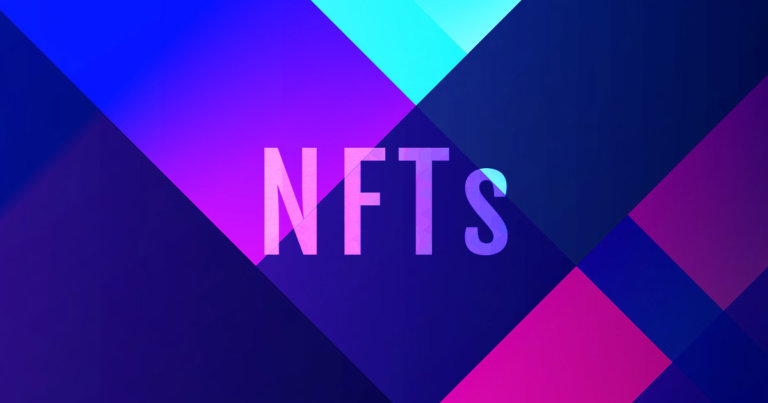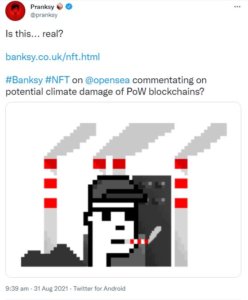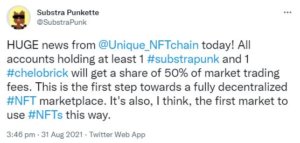 Fake Banksy NFT sells for £244,000. Let’s talk about NFT vulnerabilities.
Fake Banksy NFT sells for £244,000. Let’s talk about NFT vulnerabilities. Fake Banksy NFT sells for £244,000. Let’s talk about NFT vulnerabilities.
From punks to pills and everything in between, NFTs have exploded in the world of crypto so is it time that we spoke about intellectual property?

Cover art/illustration via CryptoSlate. Image includes combined content which may include AI-generated content.
In an elaborate hoax this week, NFT collector Panksy ended up buying a fake Banksy NFT for £244,000, which would be considered a bargain in the world of NFTs these days.
Although nearly all of the money was returned to the buyer, this incident alone highlights some of the ways NFTs are exposed to security threats.
From punks to pills and everything in between, NFTs have exploded in the world of crypto so is it time that we spoke about intellectual property?

The ability to replicate artistic works without consequences keeps raising its head as more and more established artists and collectors engage in NFT trading. Another example of artist dismay this week came from the popular creator of squiggle NFTs.

If the whos who of the worldwide web are currently selling NFTs how do we manage intellectual property laws in different jurisdictions and who is responsible for any copyright infringements? Both the platforms and the sellers hold some level of control here.
Managing the NFT spades
The platforms that allow minting of NFTs and sell NFTs need to be aware of the types of NFT’s they are dealing with and maybe exposed when it comes to how transactions are being used on their platforms.
The seller needs to be aware that the content within an NFT cannot be changed. If they have explicitly copied somebody else’s work and they have copyright or IP on the work then there is no way to go back and edit the original.
One interesting piece of technology is EDFS technology which aims to provide file storage security at the kernel layer of a file system. It is essentially a storage solution that offers a secure way to own and share digital assets. They want to address intellectual property issues for NFT creators and combine on-chain data with off-chain encrypted digital files.
Another way to counteract the ability to copy NFTs is to balance creator freedom with the right of ownership.
Unique Network this week announced that they are giving their NFT marketplace back to the community, meaning the marketplace underneath Substrapunks and Chelobricks will be mostly owned by those who have already purchased them. They are decentralizing the marketplace and giving 50% of the earnings back to the community.
This could set a precedent and is also a clever way to give control to the owners of the NFTs.

Although currently, it is pretty easy to copy, download and re-use NFT’s we are only scratching the surface in terms of how NFTs are used. The .JPEG images or GIFs we find with some of the most popular NFTs today may be real estate or characters within games tomorrow. If incidents like the fake Banksy keep arising then the security of NFTs will become
NFTs are supposed to be free from duplication with their digital identity stored on the blockchain. However, incidents like the Banksy/Pranksy hoax this week demonstrate that there are plenty of vulnerabilities that both artists and collectors need to be aware of.

























































